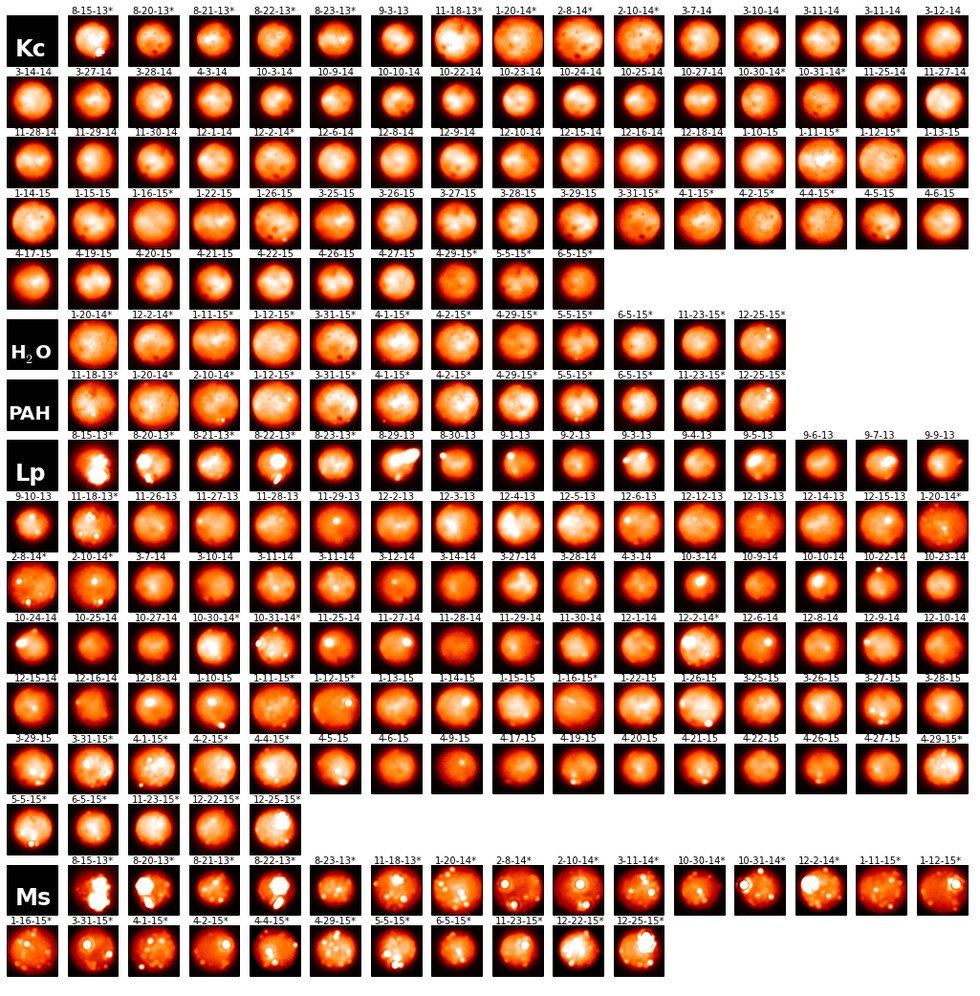Now, astronomers have been able to gather observations of the 2,000 mile-wide Io with two of the world's most powerful telescopes, watching it burn over two years.
"On a given night, we may see half a dozen or more different hot spots," said Katherine de Kleer, of UC Berkeley who led the 29 months of near-infrared observations using the 10-meter Keck II and the 8-meter Gemini North telescopes atop Mauna Kea in Hawaii. It is perhaps a little poetic that Mauna Kea is also a volcano, albeit a dormant one. "Of Io's hundreds of active volcanoes, we have been able to track the 50 that were the most powerful over the past few years."
As Io orbits Jupiter, slight changes in the moon's orbital distance can cause pretty dramatic changes in the tidal forces it experiences, causing friction from tidal heating. This mechanism delivers a huge amount of energy to Io's interior, keeping it in a molten state and driving perpetual volcanism.
But on analyzing 100 days-worth of observations between August 2013 and December 2015, they found a surprising number of powerful, but short-lived eruptions all occurred on the rear-facing hemisphere and at higher latitudes than longer-lived eruptions.
"The distribution of the eruptions is a poor match to the model predictions," de Kleer said in a statement, "but future observations will tell us whether this is just because the sample size is too small, or because the models are too simplified. Or perhaps we'll learn that local geological factors play a much greater role in determining where and when the volcanoes erupt than the physics of tidal heating do."
 |
| Io, as seen in near-infrared wavelengths, exhibits a huge number of volcanic eruptions. |
Read more at Discovery News


No comments:
Post a Comment